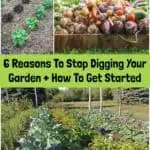
Now is the season to stop treating your backyard garden as a mini-farm and end the backbreaking work of digging once and for all.
Not only will your gardening “work” be more fun, you’ll end up working less hard too – which can only be a good thing. More veggies with less water and weeding input.
Sounds too good to be true?
Below the surface
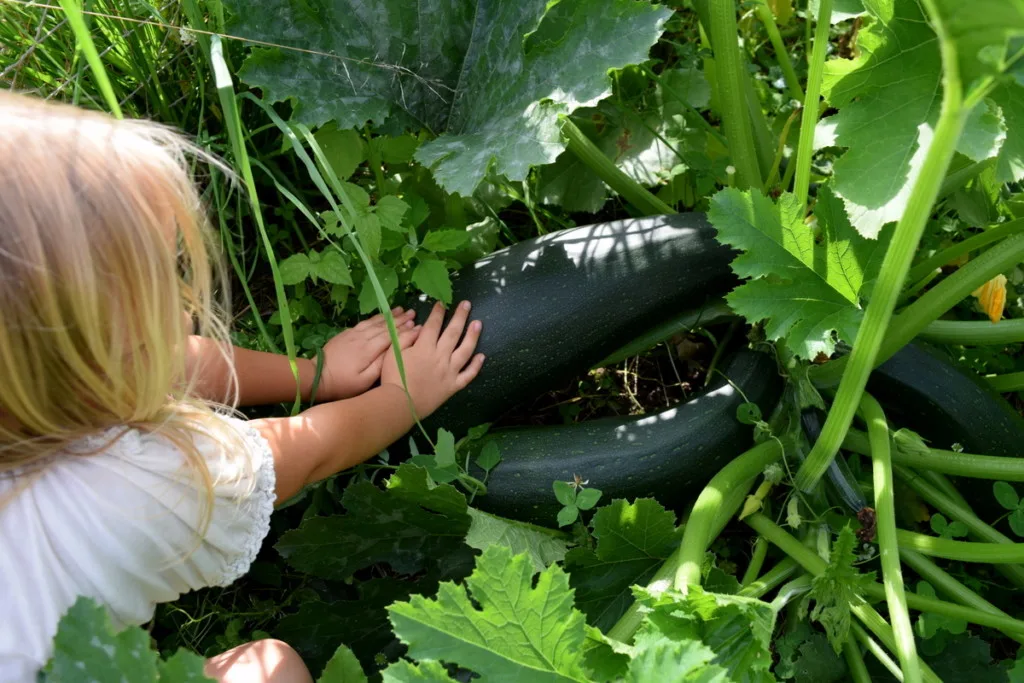
We are always looking at what others are doing as we are learning from one another.
Though this method of copycatting has proven useful in other areas of our lives, avoiding poisonous mushrooms for example, it doesn’t always work in our favor.
Instead, it favors traditions and it also allows bad, or illogical, ways of working/thinking to be passed down from generation to generation.
Even before tractors came along and made tilling the acceptable practice for loosening compacted soil and bringing nutrients up to the surface, we had already discovered the spade.
We were ready with both hand and foot to turn over every piece of green where we did not want a lawn, but a lush garden with rows of lettuce, beans, peas, carrots and potatoes.
It turns out, that you can have that idealized abundant garden, even without digging the soil.
The short and sweet answer to all your digging woes is mulch – and lots of it!
6 Practical Reasons To Stop Digging Your Garden
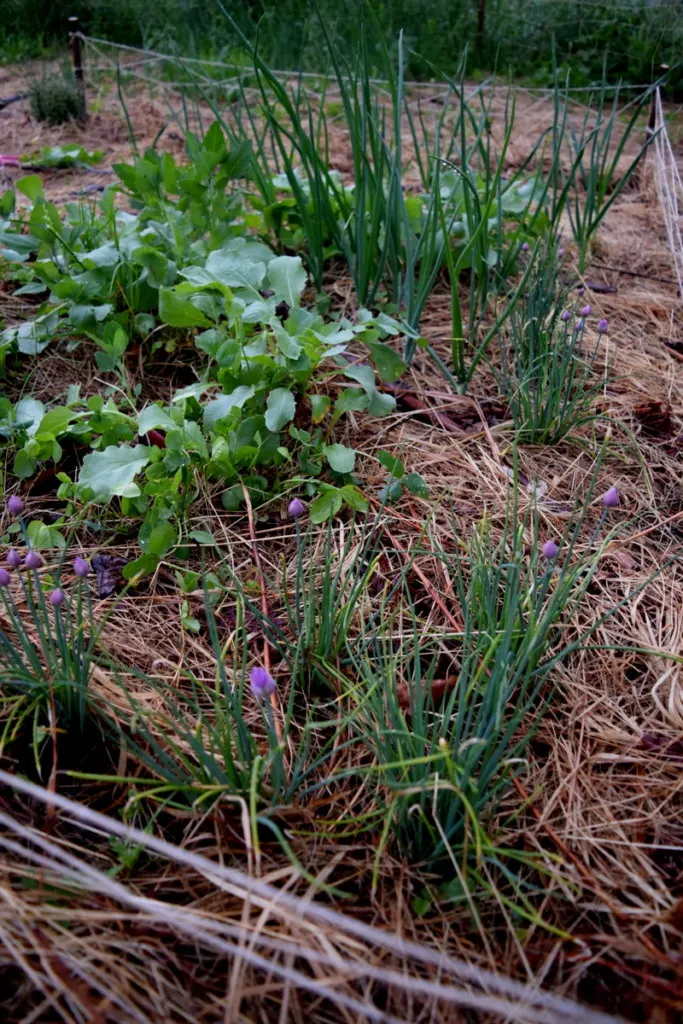
Even though we cannot see it with our bare eyes, the soil is teeming with life and it is much more complex than any ecosystem above the ground.
With 50 billion microbes in just 1 tablespoon of a healthy soil, we need to think hard about our desire to break it up.
When we dig and turn the soil, exposing it to drying air and ultraviolet sun rays, we are unintentionally sterilizing the soil – and killing many of the beneficial organisms. Perhaps digging is not such a great way to garden after all?
Never fear, there is hope on the other side!
Let’s first examine the reasons you may want to switch to a no-dig gardening system in your backyard, then we’ll offer the essential steps to getting started.
1. Soil compaction
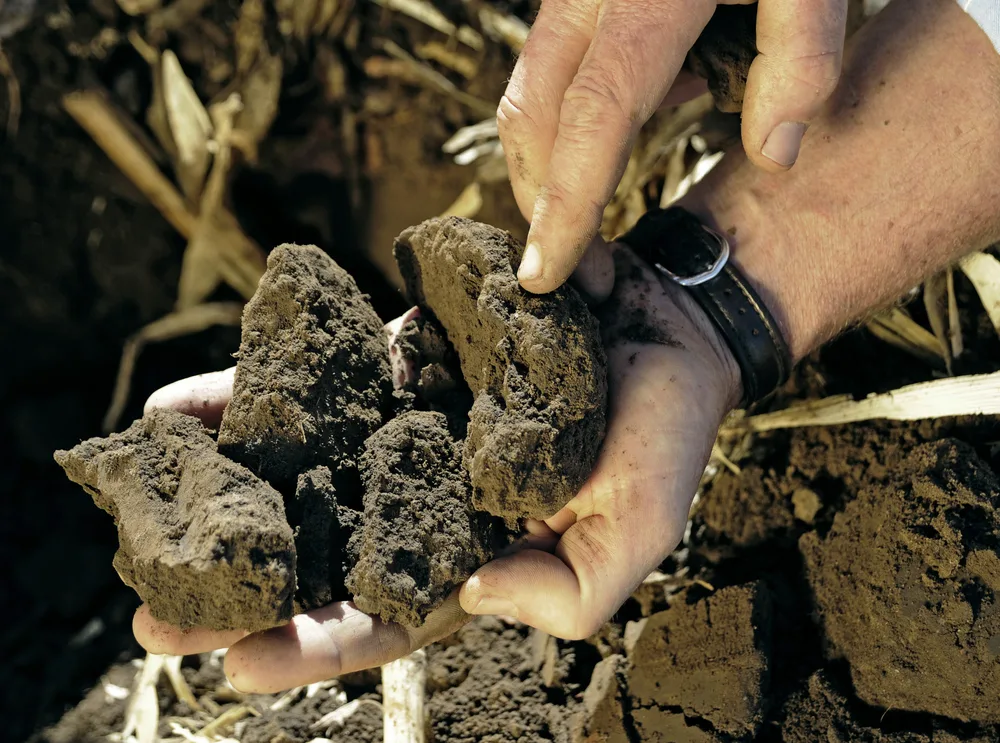
Long ago, farmers found that when they tilled the soil, fertility rose. But, and this is a big one – it only works once.
The same patch of land turned multiple times only loses its vitality. And that is where chemical fertilizers come into play. You need more and more to grow the same plants. More tilling, more chemicals, more compaction. More of all the wrong stuff.
Fluffing the soil, then recompacting it, either by tractors or feet, destroys the intricate soil structure. It also prevents air and water penetration to the roots of the plants. Water is essential to the life of the plant, don’t cut off the supply, rather increase it by building the soil over time.
You’ll also want to watch where you step!
Raised no dig gardens are the perfect solution to non-compacted soil. You can also achieve this by using dedicated paths in the garden.
2. Fewer weeds
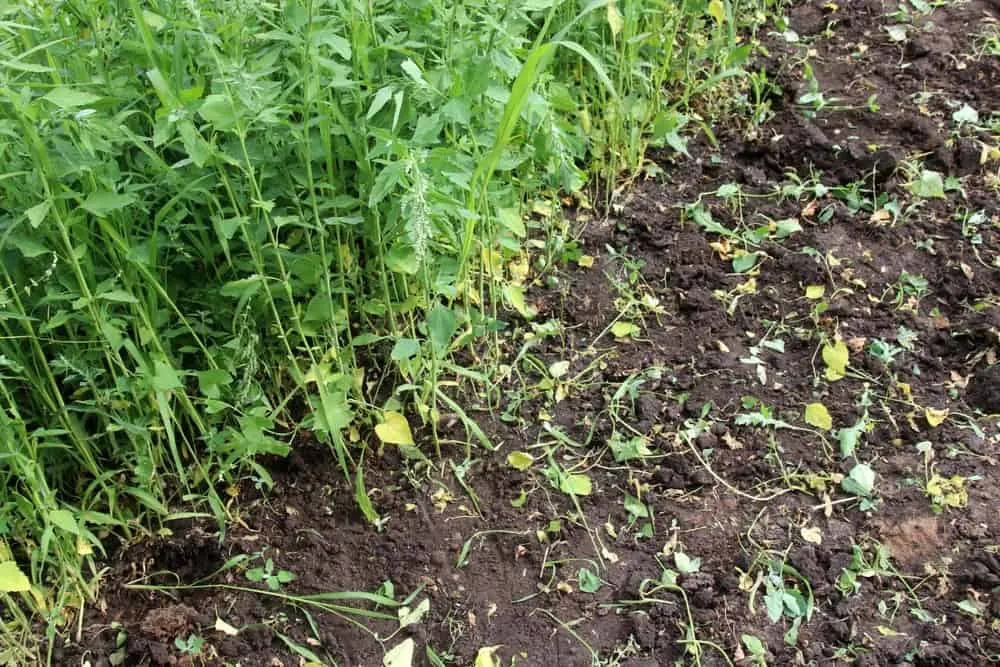
The lack of bare soil in a no-dig garden prevents both perennial weeds and seeds of annuals from germinating.
With layers of mulch covering nearly your entire garden, weed cover will be much less than in a conventional garden.
Of course, there will always be some amount of weeds, brought in via compost, or simply by blowing in.
With each season, the weed cover will gradually decrease, and they only need removing by hand. Pull a few weeds every time you go out to harvest and your garden will be beautiful every day!
Keep in mind that many weeds are edible (for both humans and the animals you raise!) and incredibly nutritious too. Pick them often and add them to “wild salads” as you maintain the garden:
- chickweed
- dandelion
- purslane
- goosefoot
- plantain
- stinging nettle
- clover
3. Attract more earthworms
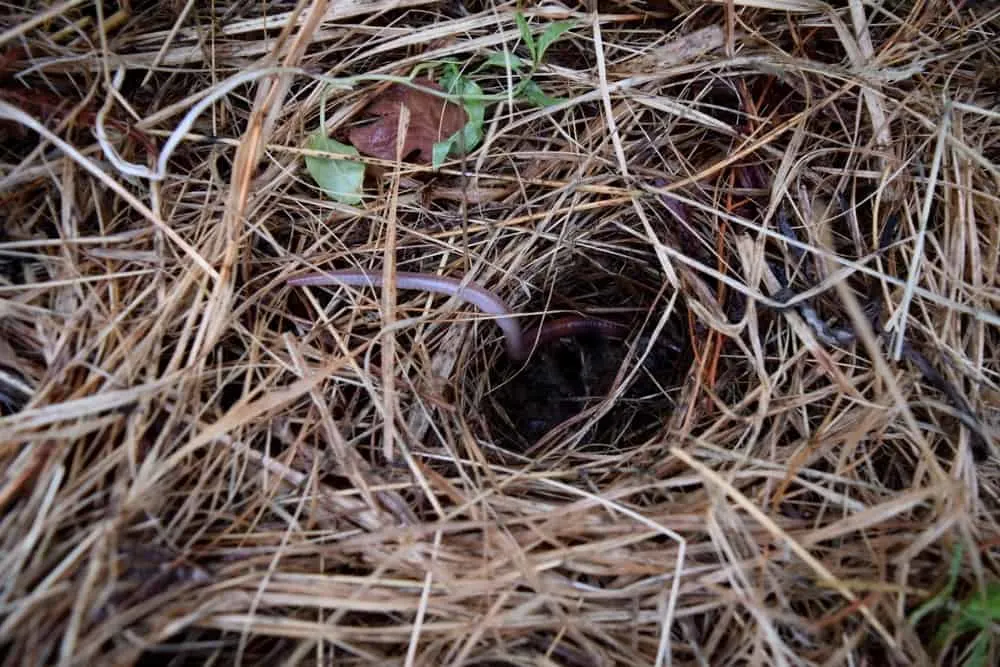
Organic farms thrive on organic matter in the soil, earthworms do too.
When you stop digging and let the soil rest, year after year it will become stronger and more fertile.
On the other hand, when the soil is plowed deeper and turned, there is a loss of beneficial life. Disturbing the soil actually decreases the amount of worms.
As you continuously add mulch and compost to your no-dig garden, you are giving the worms exactly what they need, and they will help aerate the soil in return.
4. Increased water retention
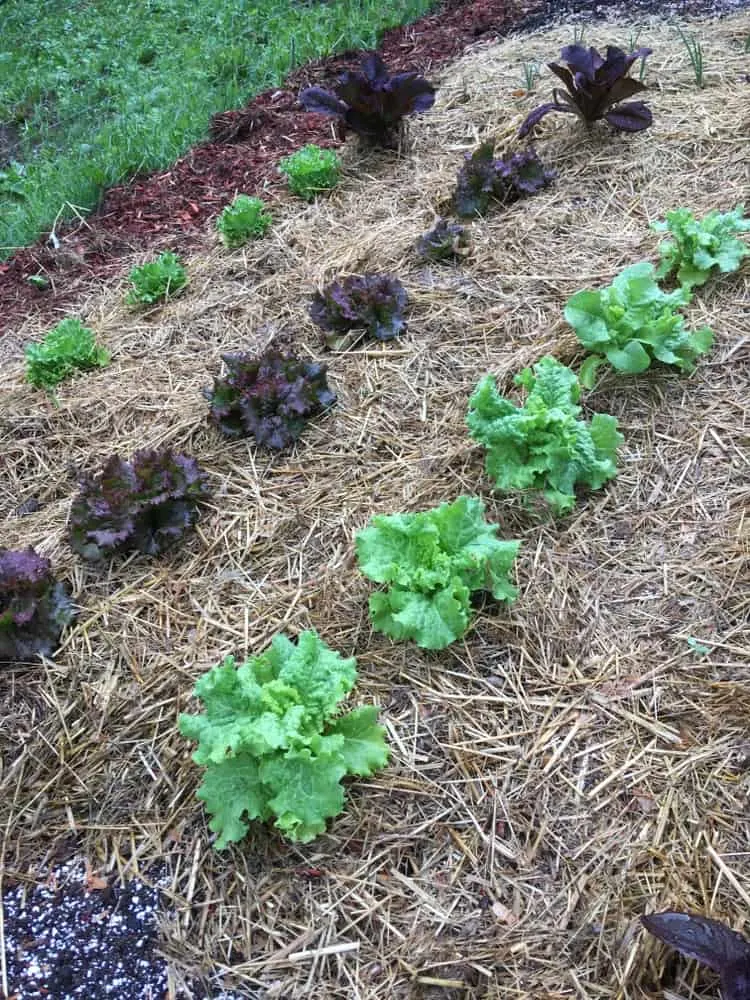
The addition of copious amounts of organic matter will do wonders for your no dig garden.
You can even layer it up to 4″ (10 cm) deep on top of the soil. This mixture of various components will give your garden the ability to soak up and retain soil moisture, at the same time allowing the excess water to drain away. This means less time spent with the hose, and more time admiring your plants!
At some point your neighbors will take note of your amazing crop, at the same time noticing that you are not watering every day, if at all.
Let them look and ask questions, then offer them a squash or two, that is the best way to pass the benefits of no-dig gardening along.
If you garden in a climate that experiences drought, know that you can also prevent a significant level of evaporation by the addition of mulch.
5. Higher yields
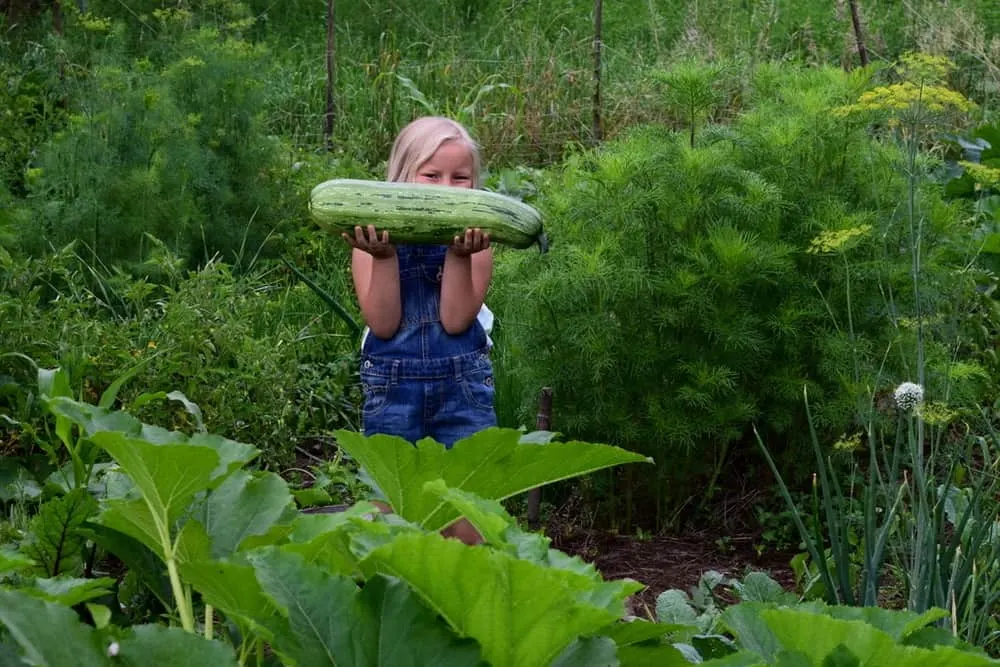
The first year of no-dig gardening, may just prove to be a disappointment. Please, don’t be misled. The quality and quantity does get better with time.
As you start out with layering your compost and organic matter, it will take some months for those materials to break down to the stage of providing nutrients for your new seedlings. Yet, the building of new, healthy soil is just what is on order to have a prolific garden.
Slow down to the speed of nature and watch (and taste!) as your vegetables become more nutrient-dense every year.
6. Minimal disruption to the soil
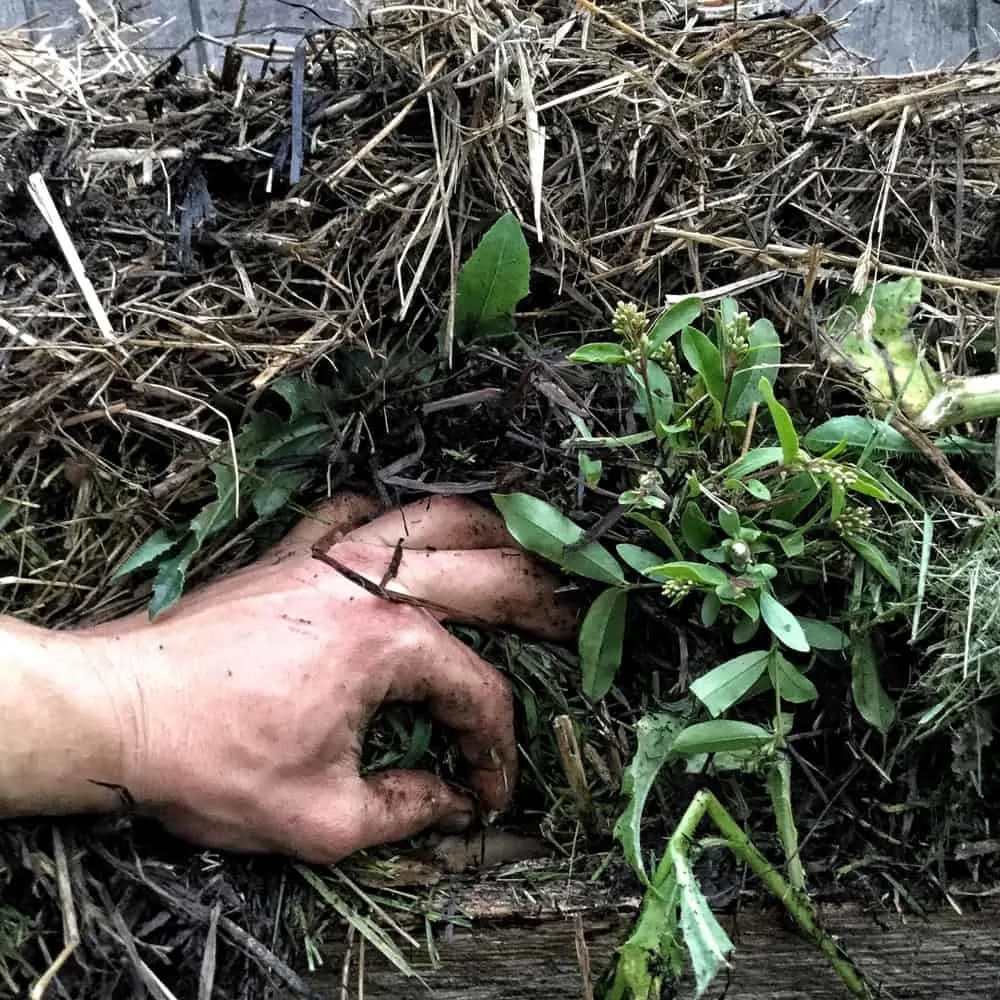
Where you leave the soil unturned, beneficial organisms can thrive in their natural undisturbed environment. This allows for a balance between prey and predator species.
When it comes time to plant your garden seeds, all you need to do is pull back the mulch and use a rudimentary tool, such as a stick, to draw a line directly on the soil. Fill the small trench with seeds and patiently wait for them to emerge.
There is absolutely no need to go any deeper, the worms are far better diggers than we are – if you feed them, they will help to feed you.
How To Get Started With No-Dig Gardening
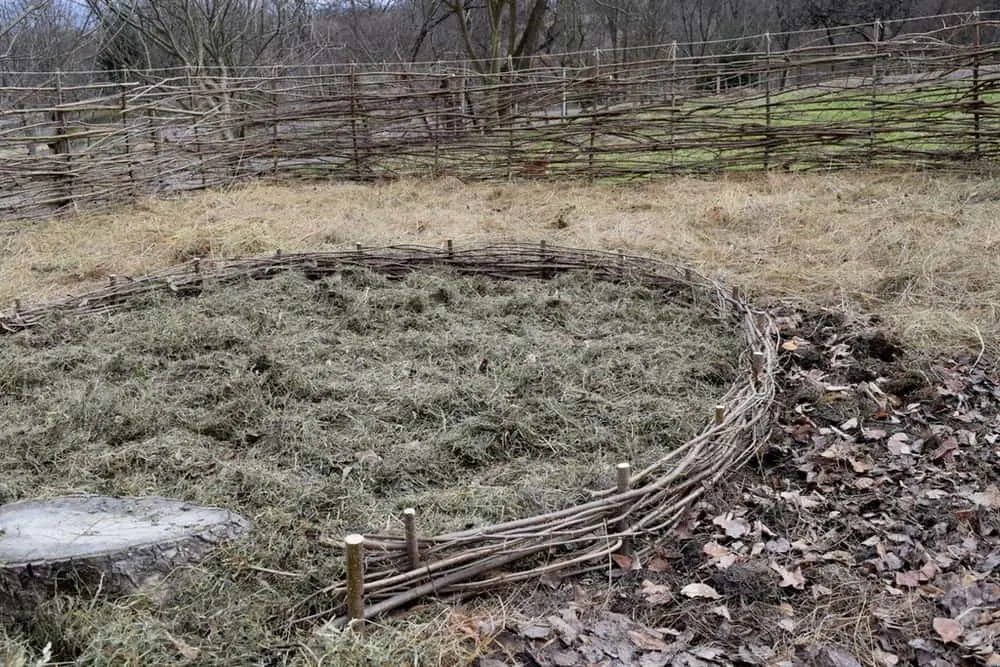
Whether you are converting an existing dug garden to a no-dig one, or starting afresh on untilled land, you have it easy.
Fall/early winter is the best time to get started on laying down your compost and mulch.
First though, scythe, mow, or cut back all vegetation as close as possible to the ground.
Next, you will want to add a generous layer of well-rotted organic matter, consisting of:
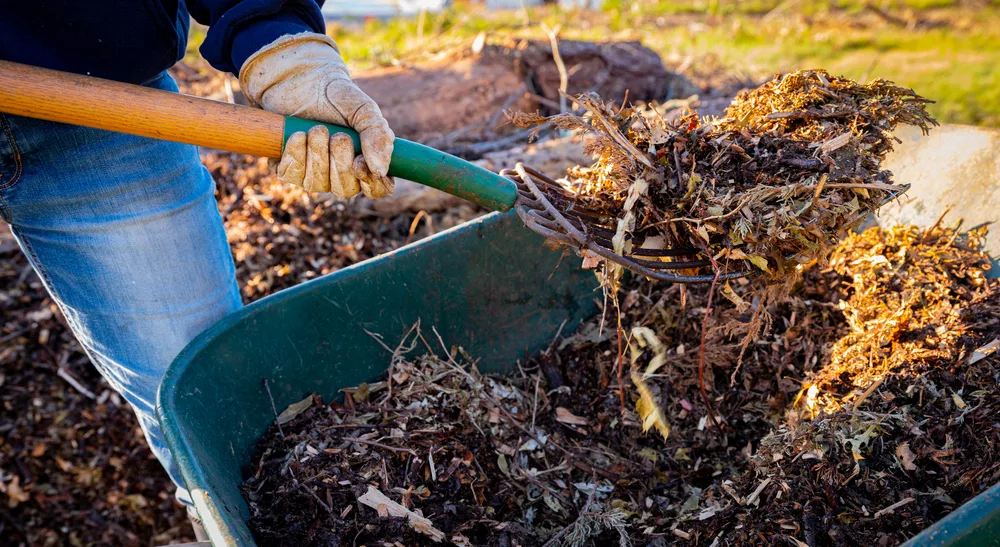
- animal manure (cow, horse, pig chicken)
- food scraps
- leaves
- composted wood chips
- spent mushroom compost
- alfalfa straw
This layer of organic matter will help to block out the sunlight, as it provides a nutrient-rich footing for roots to grow into.
Come spring time, when you are ready to plant (and those first few weeds begin to emerge), you’ll want to start adding some dry material on top of the compost. This can include straw, hay or dry leaves from last autumn.
As the mulch wears down and becomes one with the soil, simply replace it with fresh layers of organic matter and mulch.
No Dig Gardening FAQs
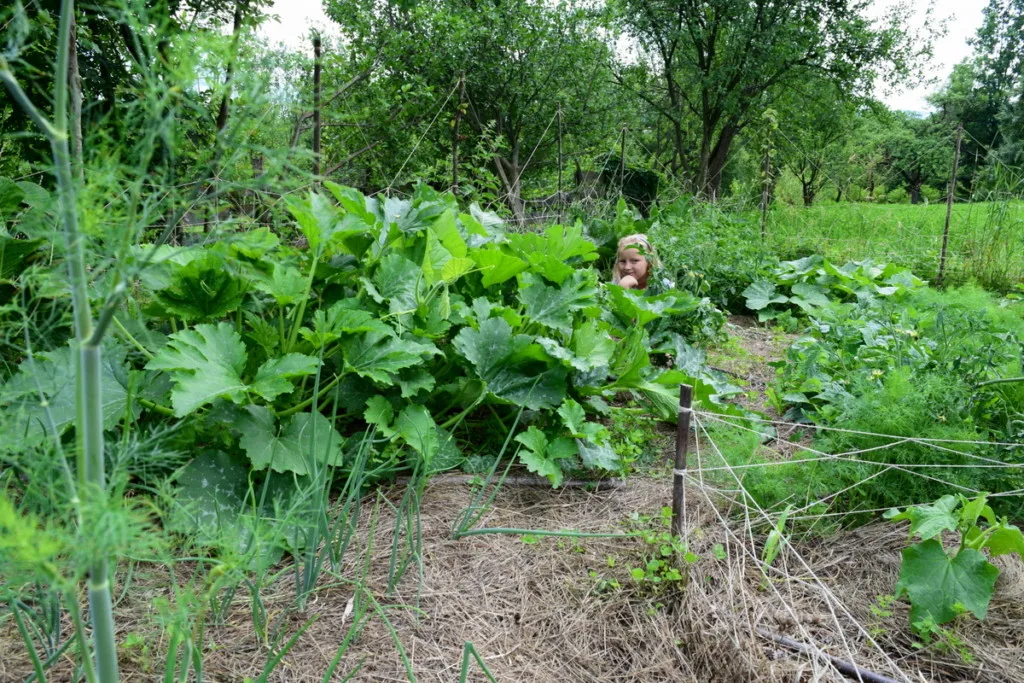
Should I loosen the soil first?
If you can preserve the soil structure on an existing plot of land, do it.
The worms will come in time, and with the addition of organic matter. It holds little to no relevance whether your soil is heavy clay, sandy or somewhere in between. Soil drainage will always be encouraged by the presence of worms, you’ll just have to wait.
How can I grow root vegetables?
Carrots, parsnips and parsley root will all grow well in a no-dig garden. All you need to do is to sow the seeds directly onto the surface layer and they will grow deep into the ground, even in compacted soil.
Take care when harvesting to loosen the roots, rather than dig them out.
Can you grow potatoes in a no-dig garden?
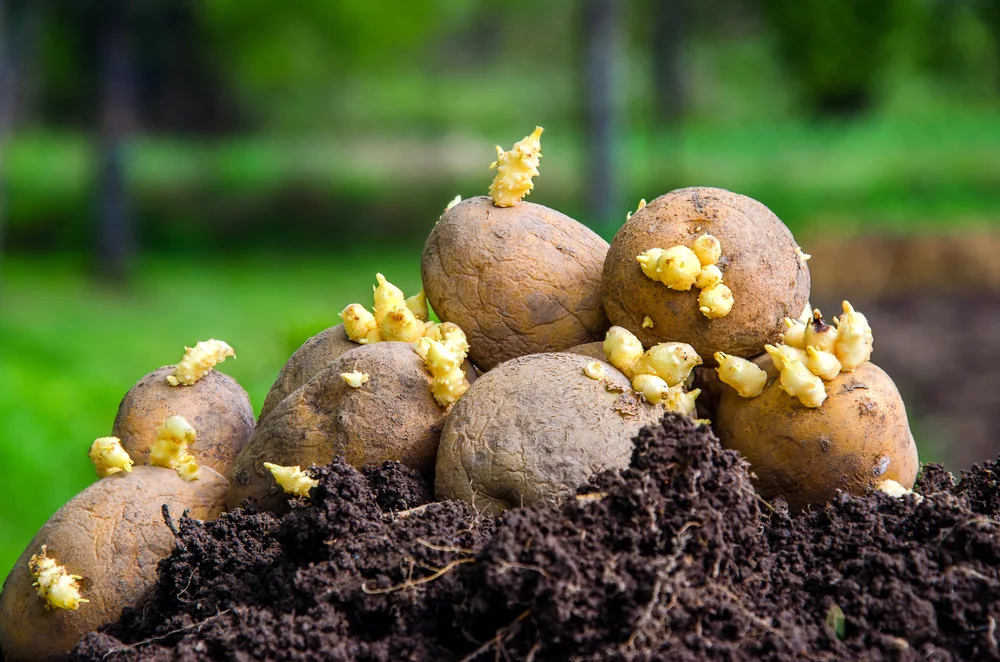
Modern practices of planting potatoes require implements that bury the seeds deep in the soil, though straw bales and wire cages are changing our perception of how to grow our beloved spuds.
The no-dig method of growing potatoes allows you to lay your potato seeds directly on the soil surface, cover them with a couple inches of compost, followed by four more inches of straw. Water your potato patch well and wait for the shoots to emerge.
Keep adding straw to ensure that your potatoes stay covered, tossing on grass clippings if necessary.
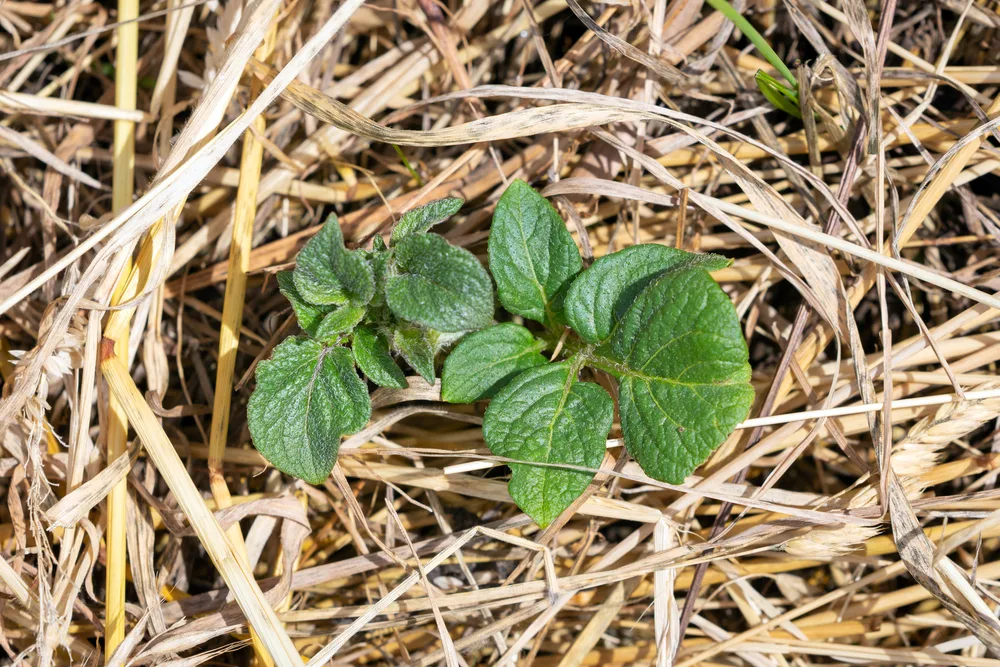
Harvesting is uncomplicated too. Pull back the mulch to check on the potatoes and harvest when they are just the right size.
You can grow anything in a no-dig garden that you can grow in a regular garden. Plus, it is ridiculously easy to spot-plant tomatoes, peppers, eggplant, cabbage and kohlrabi – any vegetable that doesn’t mind being transplanted.
Now that you have read the benefits of no-dig, or lasagna gardening, get ready to leave that spade in the garden shed.
Grab your pitchfork and the horns of the wheelbarrow instead. You’ll be moving compost and mulch, left and right.
Your garden, and back, will thank you for it!
Pin This To Save For Later
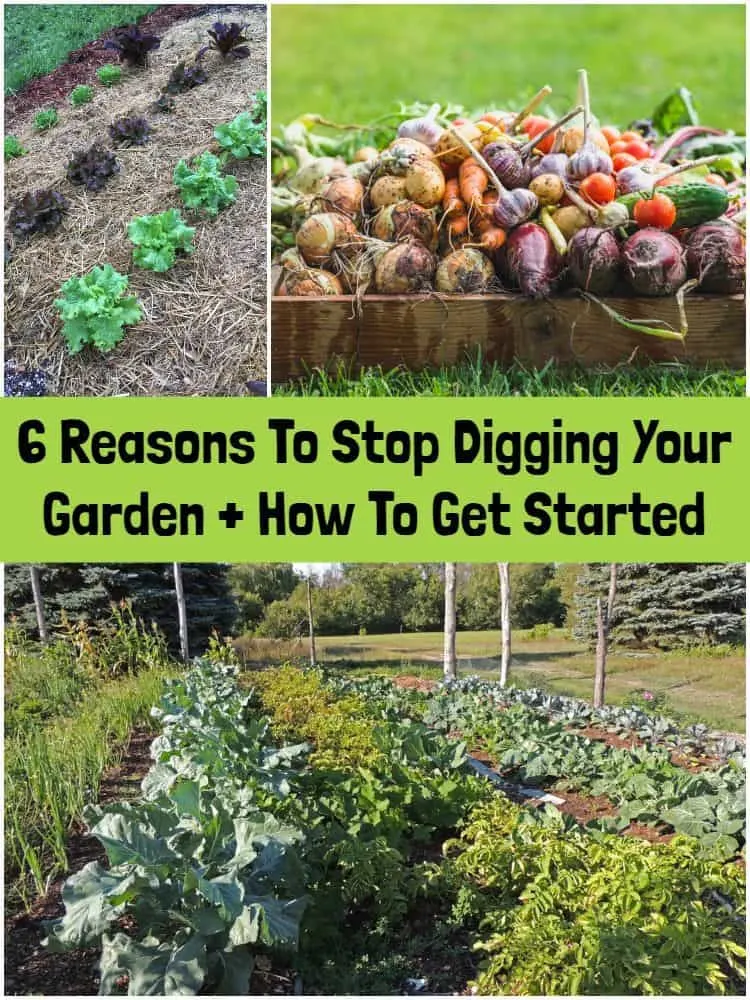

Get the famous Rural Sprout newsletter delivered to your inbox.
Including Sunday ramblings from our editor, Tracey, as well as “What’s Up Wednesday” our roundup of what’s in season and new article updates and alerts.


